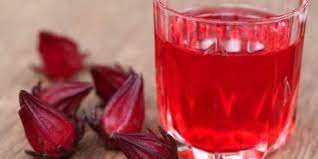Coronavirus disease 2019 (COVID-19) is a disease that has occurred since late 2019 in Wuhan, Hubei Province, China, caused by severe acute respiratory syndrome coronavirus 2 (SARS-CoV-2). Indonesia ranks 16th globally and 4th in Asia in the number of COVID-19 cases. The most common symptoms found in COVID-19 patients are dry cough, fever, and shortness of breath; however, it may vary in patients. Dentists play an important role in examining and managing oral manifestations of COVID-19 found on intraoral examination.
A poorly understood immune malfunction has resulted in an uncontrolled inflammatory response, which has been the hallmark of severe COVID-19 illness. Previous research using cytometric and transcriptome profiling indicated a unique regulatory T cells (Tregs) profile in severe COVID-19 patients, with a rise in Treg proportions and intracellular levels of the lineage-defining transcription factor forkhead box P3 (FoxP3), which was linked to poor outcomes. Tregs may play sinister roles in COVID-19, inhibiting antiviral T cell responses during the disease’s severe phase and acting as a direct pro-inflammatory factor (Galvan-Pena et al., 2020). Interleukin (IL) IL-6 levels are considerably higher in COVID-19 patients and are related with poor clinical outcomes. Inhibiting IL-6 may be a unique therapeutic target for controlling dysregulated host responses in COVID-19 patients.
A poorly understood immune malfunction has resulted in an uncontrolled inflammatory response, which has been the hallmark of severe COVID-19 illness. Previous research using cytometric and transcriptome profiling indicated a unique regulatory T cells (Tregs) profile in severe COVID-19 patients, with a rise in Treg proportions and intracellular levels of the lineage-defining transcription factor forkhead box P3 (FoxP3), which was linked to poor outcomes. Tregs may play sinister roles in COVID-19, inhibiting antiviral T cell responses during the disease’s severe phase and acting as a direct pro-inflammatory factor (Galvan-Pena et al., 2020). Interleukin (IL) IL-6 levels are considerably higher in COVID-19 patients and are related with poor clinical outcomes. Inhibiting IL-6 may be a unique therapeutic target for controlling dysregulated host responses in COVID-19 patients.
Cytokine storm has an important role in the pathophysiology of COVID-19. The link between inflammation and oxidative stress has been extensively established. Malondialdehyde (MDA), an oxidative stress measure, is considerably higher in COVID-19 patients. This might have a crucial role in disease development mechanisms. Patients with COVID-19 may benefit from methods for lowering or avoiding peroxidation, such as the use of an antioxidant substance. Oxidative stress is causing an increase in heat shock proteins (HSPs) expression.
Natural ingredients are proven to have the ability to control infectious diseases. In several countries, including Indonesia, the roselle flower (Hibiscus sabdariffa L., family Malvaceae) is one of the medicinal plants that can be easily found and consumed. The chemical components present in H. sabdariffa have potential health benefits, including antiseptic, diuretic, antihypertensive, anticholesterol, antibacterial, and antioxidant. The content of ascorbic acid and flavonoids make this plant have natural antioxidant activity, which can act as an immunoregulatory agent. Therefore, this study is aimed to identify the potential of H. sabdariffa chemical compounds such as anthocyanins, (+)-tartaric acid, and ascorbic acid as antiviral, anti-inflammatory, antioxidant, and increase tissue regeneration in oral manifestation due to COVID-19 infection through an immunoinformatics approach, an in silico study.
Virtual screenings through molecular docking, an in silico study targeting ACE2-spike, IL-10, Foxp3, IL6, IL1B, VEGF, FGF-2, HSP70, TNFR and MDAovalbumin showed that anthocyanins in H. sabdariffa act as an antioxidant natural biomaterial has active compounds that potential as adjuvant immunoregulators therapy, which may play an important role in increasing wound regeneration of oral manifestation of severe acute respiratory syndrome coronavirus 2 (SARS-CoV-2) as documented with bioinformatics exploration (in silico). Thus, further study is still needed to explore and elucidate the mechanism of H. sabdariffa active compound as a natural biomaterial for COVID-19 oral manifestations.
Authors: Nastiti Faradilla Ramadhani, Alexander Patera Nugraha
Link: https://jppres.com/jppres/pdf/vol10/jppres21.1316_10.3.418.pdf





